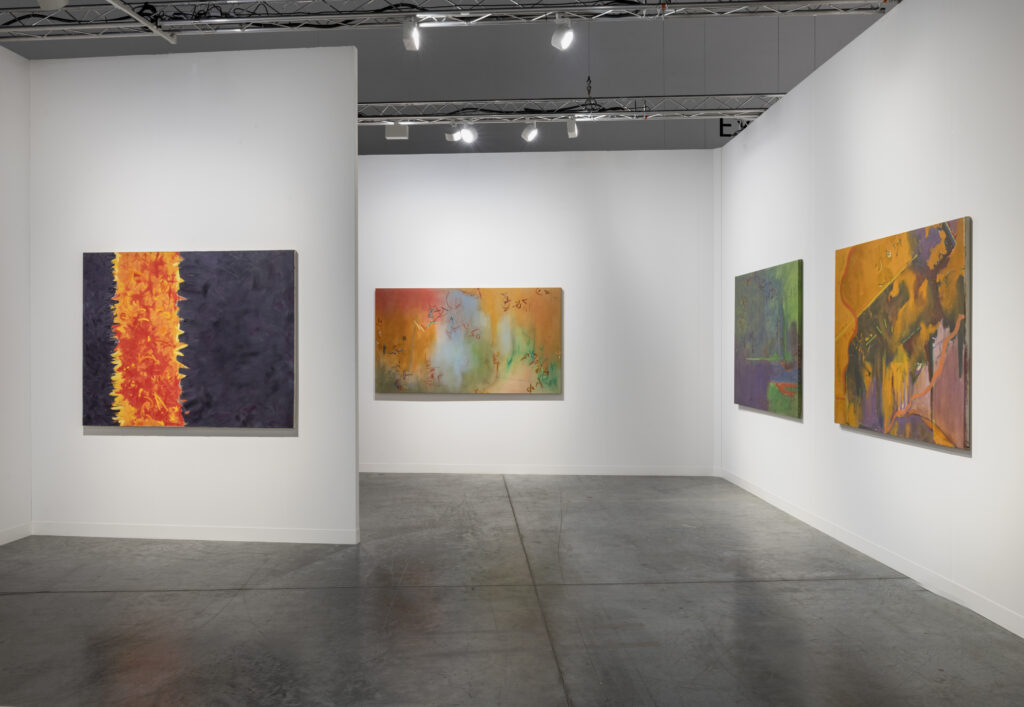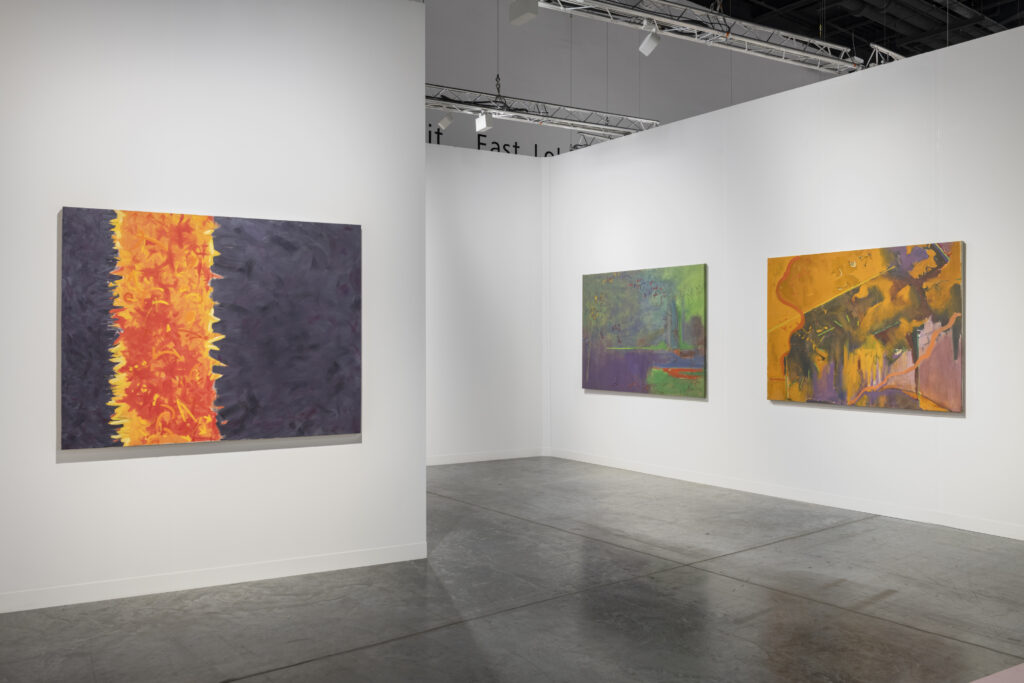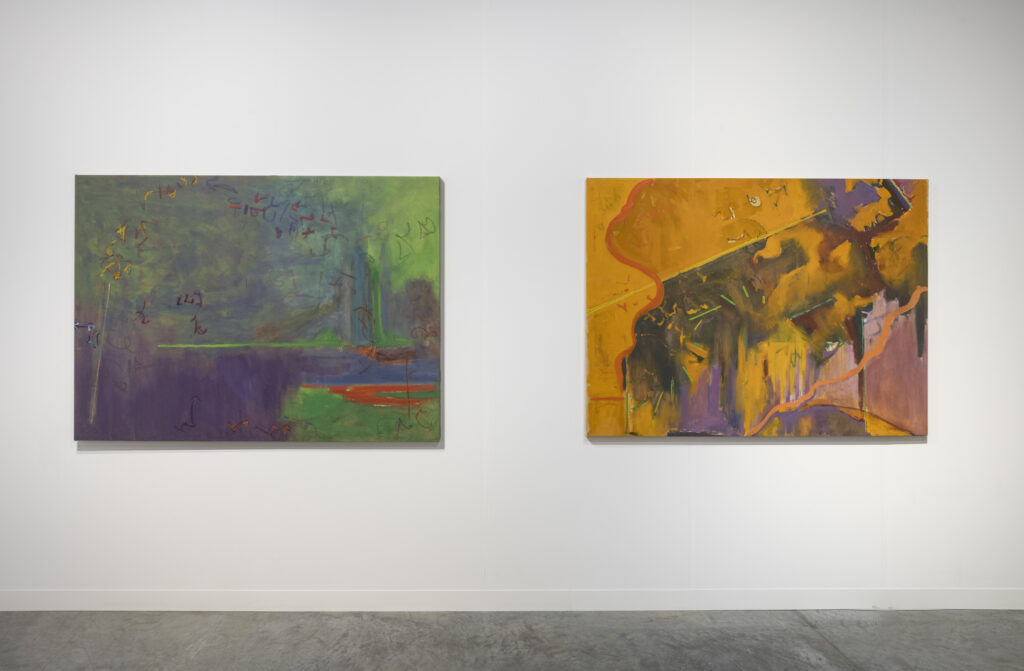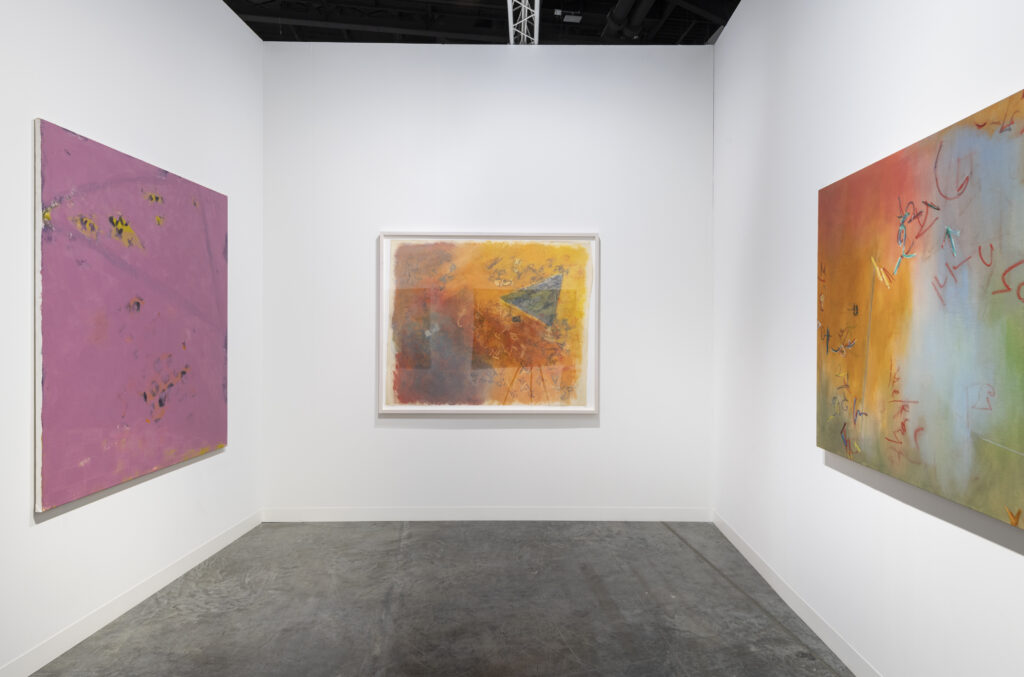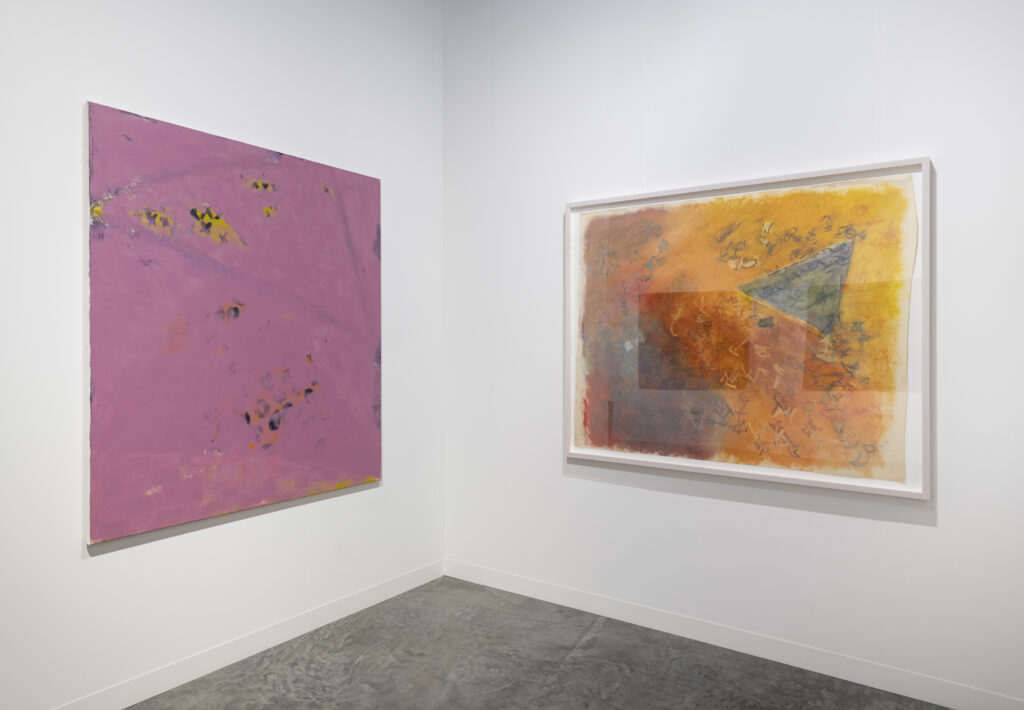Art Basel Miami Beach
Cynthia Hawkins
December 6–December 10, 2023
STARS is delighted to present a survey of early works by Rochester-based artist, scholar, and curator Cynthia Hawkins at Art Basel Miami Beach’s Survey sector.
Practicing across fine arts, curation, and historical research, Hawkins was previously hesitant to view her practices and careers as interlocking. That’s changed today. By untangling her longstanding interdisciplinary practices, this presentation of works from the 70s and 80s highlights how Hawkins creates political and social possibility through abstraction.
Hawkins describes her scholarship as a “recovery project,” and her abstract paintings and pastels synthesize references from ancient hieroglyphics to mathematics to astronomy within her own painterly language. STARS will present three bodies of work that informed one another as Hawkins progressed as an artist. With her mid-1970s pastels, she began analyzing and dissecting still lifes, distilling them to intersecting lines, eventually reaching a point where objects fell away, leaving instead a space for marks and symbols to express themselves.
In the nearly 7-foot-wide oil painting Menagerie of Players (1975–76), asemic gestures blur in and out of resolution as if moving through space, with depth almost mysteriously constructed by the layering of marks over washes of blues and oranges. In her paintings-on-paper—made over one summer on Long Island when she needed a portable method of working—gradations of complementary colors vibrate against one another, occasionally containing more legible geometric forms. For Hawkins, abstraction exists not on a painting’s surface, but serves to open up a sense of space and a mobile perspective.
Her mark-making process concentrates frenetically in Untitled (1985), a black painting shot through by jagged, flame-colored array of marks, as if one of Newman’s “zips” were erupting with signification for a reader of a language not yet born. As she explains, “The marks, symbols, and allusion to writing led viewers to believe that a message was embedded, that content simultaneously provided direction, depth, and movement into and out of the painting.” By bridging abstraction with history and form with gesture, Hawkins commits herself to “reinvent the real.”
Though many of these pastels, paintings-on-paper, and oil paintings have been away from the public eye for decades, this survey at Art Basel Miami Beach carries the momentum of her 2022 solo exhibition at STARS, Natural Things, which brought the artist back on the scene. Since then, Hawkins has been included in Karma’s Painting in New York: 1971–83 and MoMA’s Just Above Midtown. This Miami Beach presentation also lays the contextual groundwork for upcoming solo shows of new work at STARS, Los Angeles; Kaufman Repetto, Milan; and Paula Cooper Gallery, New York. Revisiting early works in ABMB’s Survey section offers insight into Hawkins’s complex and syncretic working method that influences her practice—and finds resonance in painting generally—to this day.
Cynthia Hawkins (b. 1950, Queens, New York) received a BA in painting from the Queens College, City University of New York in 1977 and an MFA from Maryland Institute College of Art in 1992. She has exhibited widely in New York and the Unites States throughout her career, and her one-person exhibitions include Cynthia Hawkins, Just Above Midtown, New York (1981); Cynthia Hawkins, Frances Wolfson Art Center, Miami (1986); New Works: The Currency of Meaning, Cinque Gallery, New York (1989); Selected Works: 1990–1996, Queens College Art Center (1997); Clusters: Stellar and Earthly, Buffalo Science Museum, Buffalo (2009); Natural Things, 1996–99, STARS, Los Angeles (2022); and Gwynfor’s Soup, or the Proximity of Matter, Ortuzar Projects, New York (2023). Hawkins’s work is in numerous public collections, including The Studio Museum in Harlem, New York; The Bronx Museum of the Arts, New York; Kenkeleba Gallery, New York; The La Grange Art Museum, Georgia; and the Department of State, Washington, D.C. She has received numerous awards, including the Helen Frankenthaler Award for Painting (2023); the Black Metropolis Research Consortium Fellowship (2009); The Herbert and Irene Wheeler Grant (1995); and the Brooklyn Museum Art School Scholarship (1972).
